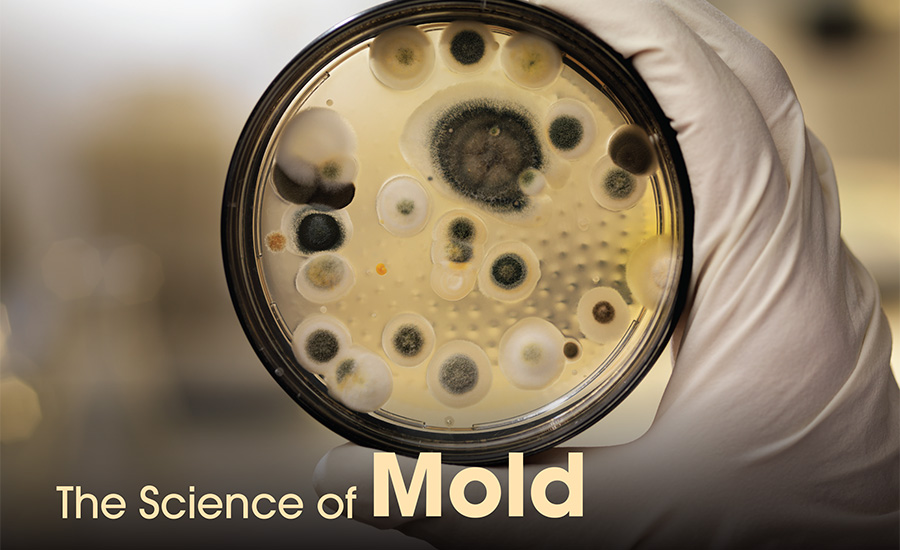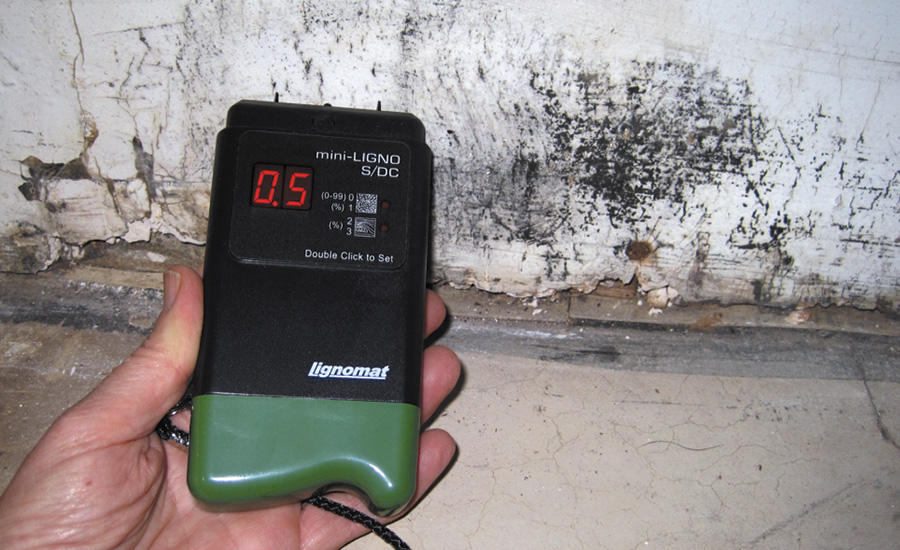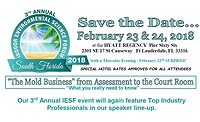The Science of Mold

Ever since stories have circulated about how mold can affect people and make them sick, the restoration and home insurance industries have become serious about detecting and repairing water damage thoroughly and swiftly. Mold is not only bad for people; if left to thrive, it will make our homes uninhabitable.
The Science of Mold
Mold is a micro-organism belonging to the group of fungi. It differs from all other living organisms in the way it obtains nourishments and in the way it multiplies. To thrive and grow, mold needs the same ingredients as humans: food, water, oxygen, and moderate temperatures.
Mold needs carbon to grow, which it unfortunately extracts from the substrate it lives on. While mold consumes these carbon-containing materials, it releases toxins into the air. Mold “eats” carbon, which it will extract from organic materials (e.g. anything made out of wood) and inorganic materials (e.g. sheetrock, concrete, some paints).
Next, mold needs water. Here, some clarification is needed. Mold will not grow, if covered with water. It will only grow if the water is available as part of the material it uses as substrate. And even then, if the humidity is too low, mold cannot extract carbon and thrive. Mold needs moisture to grow and multiply. This extra moisture is provided when water infiltrates a building from a broken pipe, too much rain, flooding, and so on. Mold can also take moisture from the air, if the relative humidity is above 80%. Last but not least, mold will not grow in temperatures below 40° Fahrenheit and above 100° Fahrenheit.

Construction Materials Susceptible to Mold Growth
Let’s use wood as an example, for a moment. If wood is dry enough, there is no mold. However, we just mentioned mold can take moisture from the air above a relative humidity of 80%. If wood is exposed to a humidity of 80%, it will slowly but surely absorb moisture until the wood reaches 16% wood moisture, which is known as the threshold for mold growth. If wood has a moisture content above 16%, mold can grow. Mold then extracts carbon out of the wood, which at first changes the color of wood. Then more and more of the wood develops dry rot and finally the wood can lose its structural strength and crumble.

Most materials in the building envelope contain carbon and under the right environmental conditions can serve as a substrate for mold growth. That includes concrete, drywall, insulation, carpets, linoleum, hardwood floors and all plastics made from petroleum products including most paints.
As long as enough water molecules are available in the top surface layer, mold will grow. Once the surface is dried out, there is not enough moisture to sustain mold growth. However, alternate periods of dryness and moisture saturation or condensation allow mold to flourish. Prime examples are showers and bathtubs, where moisture conditions often change.

The wall was measured after the area had dried out, indicated by the low moisture percentage on the gypsum scale. Most restoration specialists use the Wood Equivalent Scale to measure gypsum or drywall. This does not give a moisture percentage but only a comparable value to wood moisture.
It is in rooms such as those that mold starts out as a tiny spore, invisible for the human eye, and spreads. Spores will start a new colony if the right food is available in the form of carbon-containing materials, enough moisture, oxygen from air, and moderate temperatures are present. An expanding web of arms develops. Roots penetrate into the substrate and extract food. Stems grow into the air and produce bags containing huge amounts of spores. Once the tiny spores are released, they can travel great distances and contaminate places far away. Mold can grow anywhere. If spores happen to land in a dry place, they can be dormant for years, waiting for the right conditions to start a new mold colony. If they happen to be inhaled by people, spores can cause great harm to the human respiratory system.
Importance of Understanding Mold
The purpose of this article isn’t to educate on mold remediation; it is to provide a foundation for contractors to understand how mold grows and spreads. This is the foundation of being able to property remove mold found in a structure – because you now understand how and where it grows, where it might have originated, and what environmental conditions need to change to prevent it from growing again.

This happened in my home. The washing machine in an adjacent room overflowed sometimes. We cleaned the floor. However water had creeped under the wall into the room. The damage became obvious once the cabinet had been removed. Use of a moisture meter showed the wall was dry now, but the discoloration from the destruction of the drywall by the mold will never go away.
There are a number of tools contractors should be using when mold is found to both find the source of the moisture that’s allowing the mold to grow and to remove the mold and water damage. This includes using moisture meters to determine elevated moisture conditions and to check if moisture is at a safe level. Then, be sure you are following proper best practices and industry standards to remove the mold and return the structure to its pre-loss condition.
Hopefully understanding the science behind mold will help you tackle your next mold removal job with more expertise!
Looking for a reprint of this article?
From high-res PDFs to custom plaques, order your copy today!






